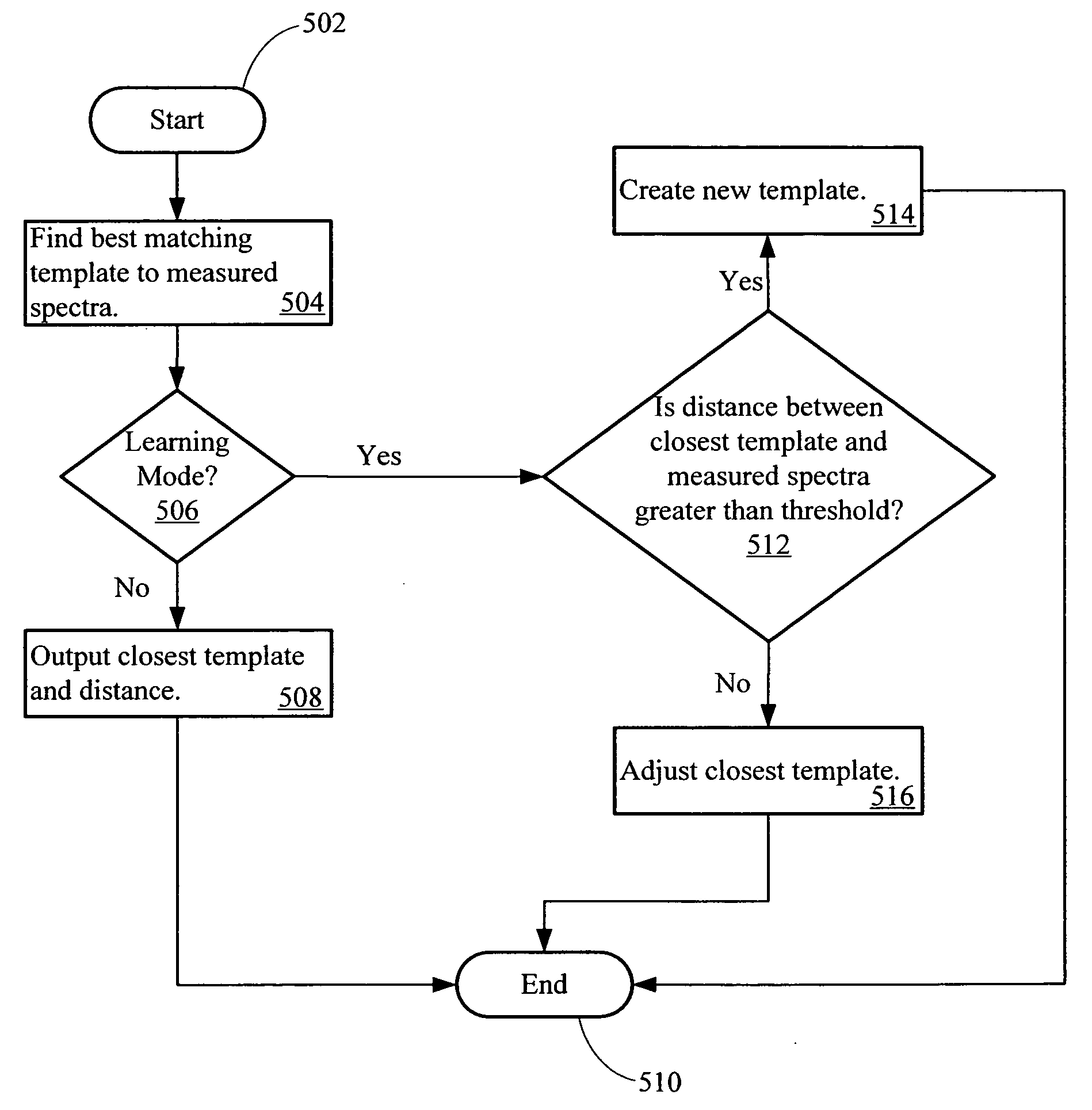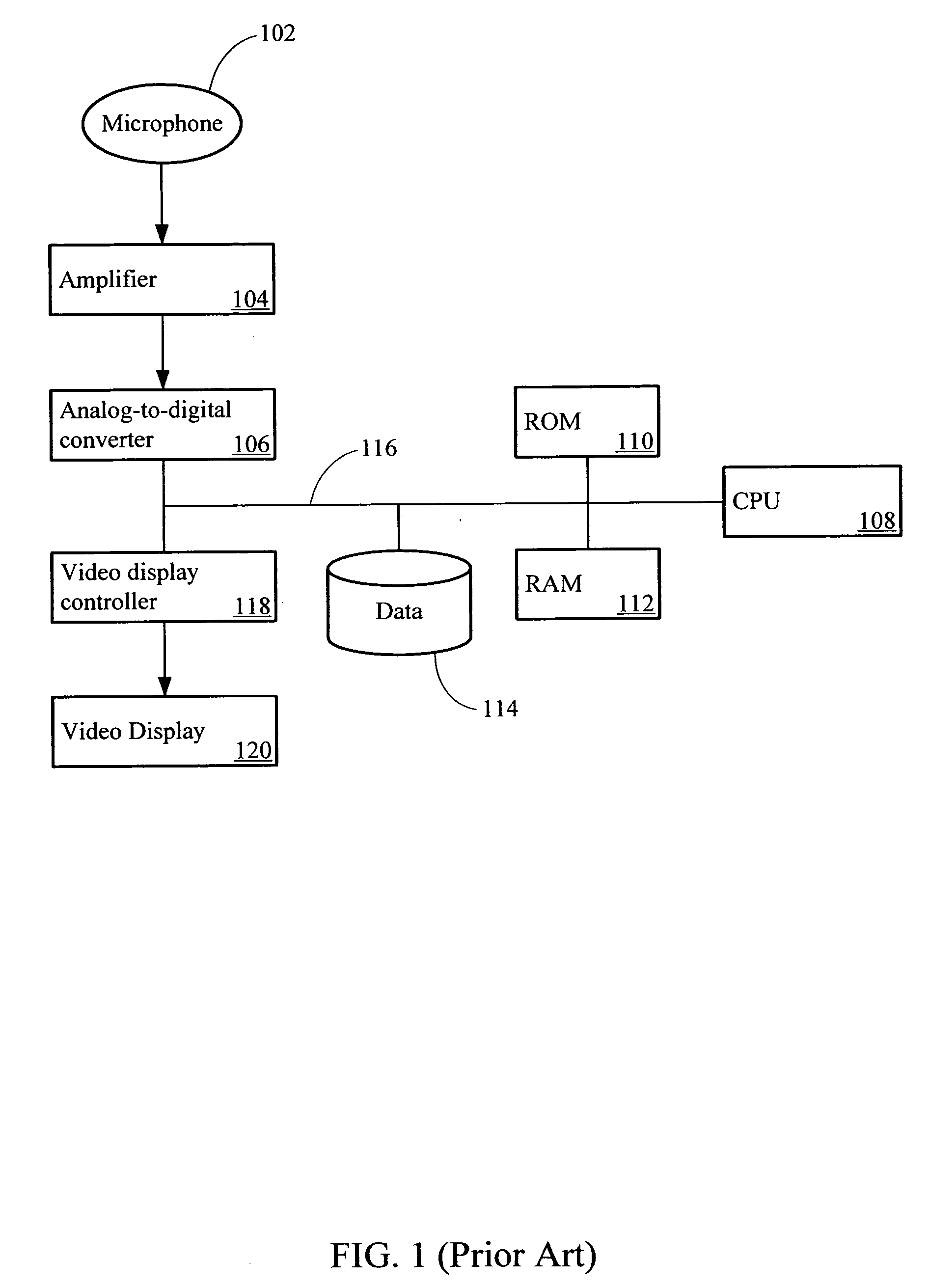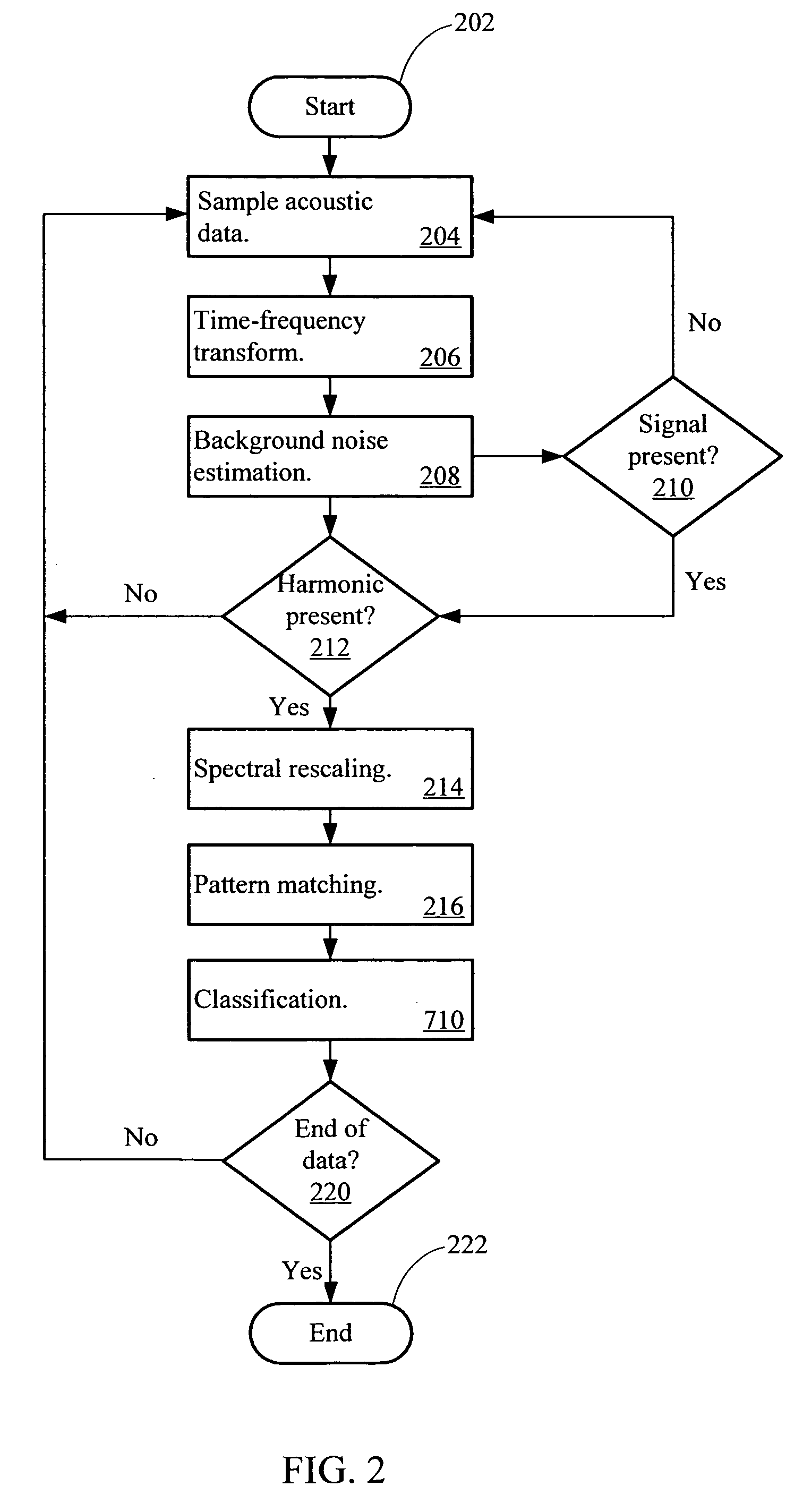Acoustic signal classification system
a classification system and signal technology, applied in the field of automatic classification of acoustic signals, can solve the problems of limiting the application of access control methods to access control, speaker is rejected or denied service, and the method cannot be used to label speakers
- Summary
- Abstract
- Description
- Claims
- Application Information
AI Technical Summary
Problems solved by technology
Method used
Image
Examples
Embodiment Construction
[0022] Overview of Operating Environment
[0023]FIG. 1 shows a block diagram of a programmable computer system suitable for implementing the signal classification system. An acoustic signal is received at a transducer microphone 102, which generates a corresponding electrical signal representation of the acoustic signal. The signal from the transducer microphone 102 may be amplified by an amplifier 104 before being digitized by an analog-to-digital converter 106. The output of the analog-to-digital converter 106 is applied to a processing system, which applies the classification techniques of the signal classification system. The processing system may include a CPU 108, ROM 110, RAM 112 (which may be writable, such as a flash ROM), and an optional storage device 114, such as a magnetic disk, coupled by a CPU bus 116 as shown. The output of the classification process can be displayed for the benefit of a human user by means of a video display controller 118 which drives a video displa...
PUM
 Login to View More
Login to View More Abstract
Description
Claims
Application Information
 Login to View More
Login to View More - R&D
- Intellectual Property
- Life Sciences
- Materials
- Tech Scout
- Unparalleled Data Quality
- Higher Quality Content
- 60% Fewer Hallucinations
Browse by: Latest US Patents, China's latest patents, Technical Efficacy Thesaurus, Application Domain, Technology Topic, Popular Technical Reports.
© 2025 PatSnap. All rights reserved.Legal|Privacy policy|Modern Slavery Act Transparency Statement|Sitemap|About US| Contact US: help@patsnap.com



